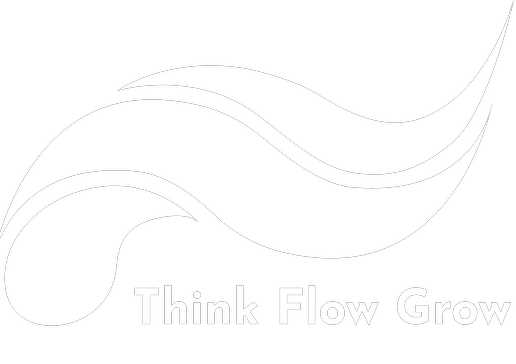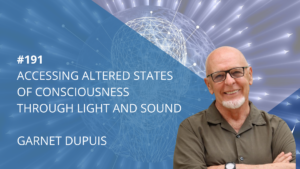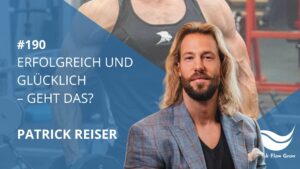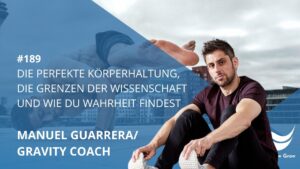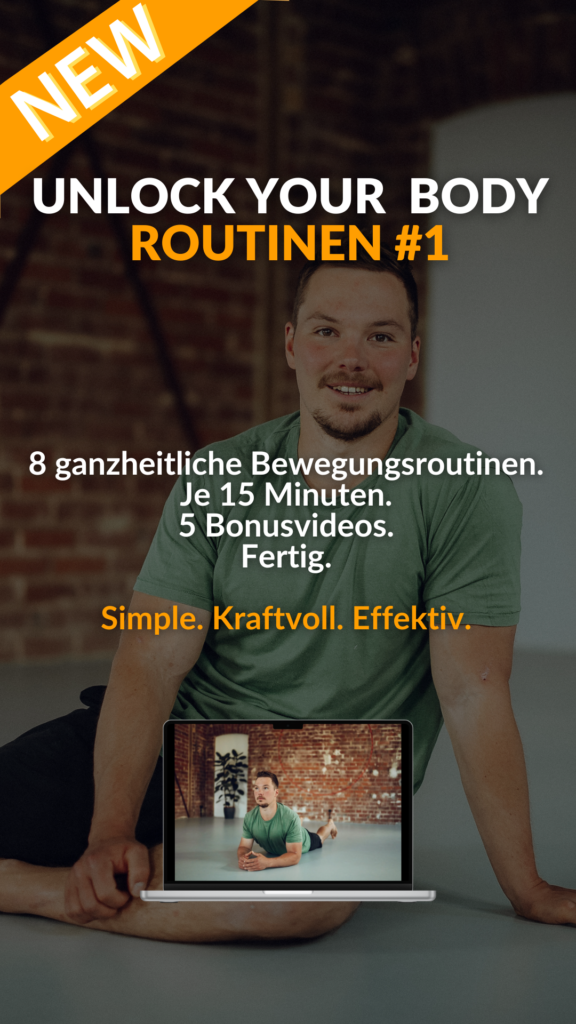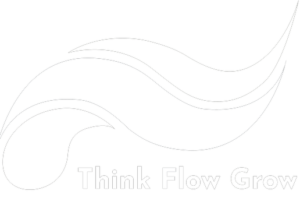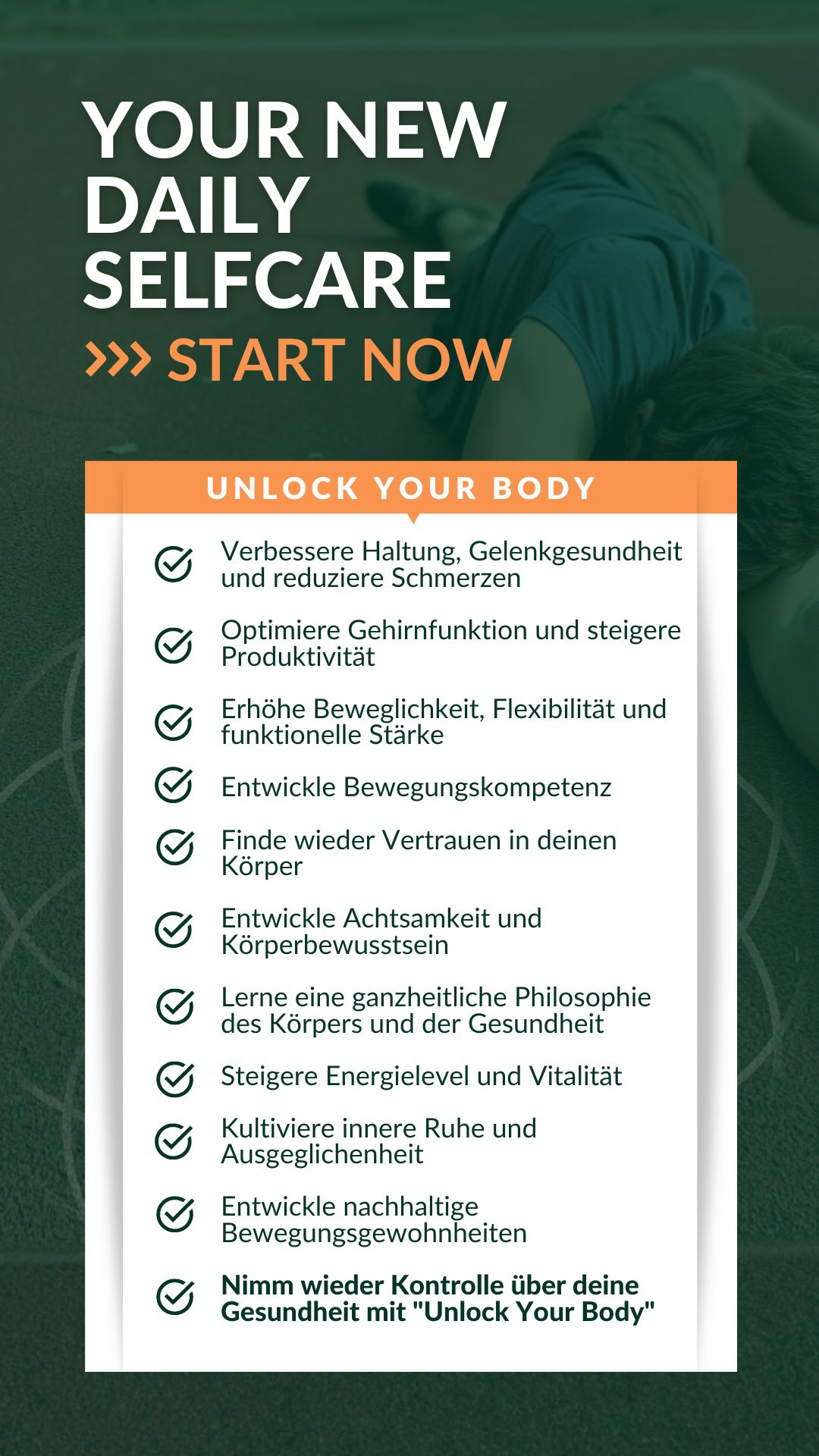Bist du in deinem Körper zu Hause? Verkörperst du deinen Körper?
Heute habe ich eine ganz besondere Episode mit der Legende Jill Miller! Ich bin Jill sehr dankbar für ihre Arbeit und du solltest es auch sein. Jill ist eine dieser Menschen, die einen großen Fußabdruck in der Gesundheits- und Fitnesswelt hinterlassen haben. Du kennst viele Ideen von ihr indirekt, nur weißt du vermutlich nicht, dass diese von ihr sind. So etwas wie ein Hidden Champion.
In der neuen Episode spreche ich mit Jill Miller über die faszinierende Wirkung von Atmung und Rollen auf Körper, Geist und Seele. Jills Bücher sind für mich so etwas wie wissenschaftlich fundierte Explorer-Guides des Körpers, mit denen du die Bedienungsanleitung für deinen Körper entdecken kannst. Ich spüre in ihren Büchern ganz viel kindliche Neugier, auch gepaart mit Sehnsucht nach Verbindung, die mich magisch anzieht.
Teile den Podcast gern und hinterlasse uns jetzt eine Bewertung bei Spotify und Apple. Danke!
Die Bedeutung des Körpers für unser Wohlbefinden
Jill hat in ihrer Arbeit mit Klienten festgestellt, dass der Körper eine faszinierende Geschichte erzählt. Diese Geschichten werden jedoch oft durch Schmerzen, Taubheit oder das Gefühl der Entfremdung abgeschwächt. Aus diesem Grund legt Jill großen Wert darauf, das Gewebe zu berühren und zu aktivieren, um eine tiefere Verbindung zwischen Körper und Gehirn herzustellen. Sie ist der festen Überzeugung, dass die Trennung von Körper und Geist überholt ist und dass wir uns an einem Wendepunkt befinden.
Besonders die Traumaforschung hat gezeigt, dass der Körper eine zentrale Rolle spielt. Das Buch „The Body Keeps the Score“ von Bessel van der Kolk hat großen Einfluss auf Jills Arbeit gehabt und immer wieder betont, wie wichtig es ist, den Körper in den Heilungsprozess miteinzubeziehen.
Ein interessanter Aspekt, den Jill hervorhebt, ist die Wirkung des Rollens mit Therapiebällen. Es geht dabei nicht nur um die Verbesserung der Beweglichkeit, sondern auch um eine Veränderung der emotionalen Bandbreite. Durch den Druck der Bälle werden nicht nur die Nerven stimuliert, die Informationen an die Hirnrinde senden, sondern auch feinere Nerven aktiviert. Diese feineren Nerven sind mit Emotionen und der Wahrnehmung subtiler physiologischer Zustände verbunden. Das Rollen ermöglicht es, Wärme, Traurigkeit, Kummer oder Erregung wahrzunehmen und bietet somit eine ganzheitliche Erfahrung.
Die Berührung der Bälle und die Aktivierung der sensiblen Nervenenden in den Faszientissues spielen eine entscheidende Rolle bei der Schaffung dieser Erfahrungen. Jill ist begeistert von der Wirkung des Rollens und der Möglichkeit, durch diese Methode eine tiefe Verbindung zwischen Körper und Geist herzustellen. Das ist auch meine Intention und Idee hinter dem Unlock your Body Programm (ENG) und Holistic Mobility Programm (GER). Ein Tor zu tiefer Gesundheit.
Über Jill Miller und den Podcast
Jill Initialzündung für ihre Arbeit vor über 30 Jahren war, dass sie ihr Körpergefühl verloren hatte. Durch sanften Druck in den Körper über Rollen und Bälle spürte sie, wie diese Stimulation die Informationen aus dem Körper zum Gehirn verbesserte und wie sie Stück für Stück wieder zur Expertin für ihren Körper wurde.
Jill ist eine Pionierin in der Verbindung zwischen Fitness, Yoga, Leichtathletik, Massage und Schmerzmanagement. Sie hat sich seit über 30 Jahren mit Bewegung und dem menschlichen Körper beschäftigt. Sie ist die Autorin der Bestseller Bücher Body by Breath und Roll Model und die Gründerin der Fitness-Formate Yoga Tune Up® und The Roll Model® Method. Jill Miller ist auch eine Mitautorin des medizinischen Buches Fascia, Function and mediacal Application. Bekannt als die Lehrerin der Lehrer, wurde Jill in der New York Times, im Wall Street Journal, in Shape, Men’s Journal, US News, Good Housekeeping, Women’s Health, Yoga Journal, Self und in der Today Show vorgestellt. Sie war auch in Good Morning America und im Oprah Winfrey Network zu sehen. Sie hat Tausende von Bewegungspädagogen, Klinikerinnen und manuellen Therapeuten geschult, um ihr bahnbrechendes Selbstpflege-Fitnessprogramm in internationale Sport- und medizinische Einrichtungen zu integrieren. Jill lebt in LA und ist Mutter von zwei Kindern und ihrem Hund.
Im Podcast erklärt uns Jill die fünf P’s einer parasympathischen Praxis: Perspective, Place, Position, Pace of Breath und Palpation, mit denen du dir deine eigene Entspannungsroutine zusammenbauen kannst. Außerdem erklärt Jill, wie Foamrolling wirklich wirkt, warum die Bauchatmung nur die halbe Wahrheit ist, wie deine Gesichtsmuskeln atmen können, was die Atemzonen eins, zwei und drei sind und vieles mehr.
- Was sind die 5 P’s für eine parasympathische Praxis?
- Was bewirkt Foamrolling wirklich?
- Was ist die Atemzone 1, 2 und 3?
- Wie kannst du konkret dein Körpergefühl verbessern?
- Wie formt der Atem deinen Körper?
- Warum sind die Rippen so wichtig für die Atmung?
- Wie kann die falsche Atmung die Gesichtsmuskeln verspannen?
Toolbox für eine parasympathische Routine basierend auf den 5 P’s
Schritt 1: Perspektive (Mindset)
- Schaffe eine positive Einstellung und sei bereit, diese Erfahrung für dich selbst zu gestalten.
- Akzeptiere alle Aspekte deiner Erfahrung und heiße sie willkommen, ohne etwas zu unterdrücken oder zu leugnen.
- Verwende beispielsweise die Affirmation: „Alles an mir ist hier willkommen.“
Schritt 2: Ort (Place)
- Finde einen friedlichen Ort oder Raum, der dir Ruhe bringt.
- Dunkelheit und Wärme sind für den Körper oft entspannend, aber wähle einen Ort, der sich für dich persönlich angenehm anfühlt.
Schritt 3: Position (Position)
- Wähle Positionen, in denen du die Belastung deines Körpers durch die Schwerkraft minimierst.
- Lege dich hin, entspanne dich auf dem Boden oder finde eine sanfte, leicht erhöhte Position, bei der dein Becken etwas höher liegt als dein Herz und dein Gehirn.
- Diese Position fördert den sogenannten Barorezeptorreflex und stimuliert den Vagusnerv, was zu einer Verlangsamung der Herzfrequenz und der Atemgeschwindigkeit führt.
Schritt 4: Atemrhythmus (Pace of Breath)
- Der Atemrhythmus beeinflusst deine Entspannungsreaktion.
- Atme bewusst langsam und tief aus, wobei der Ausatem langsam länger sein sollte als der Einatem.
- Vermeide kurze, schnelle Atemzüge, die das Nervensystem stimulieren.
Schritt 5: Palpation (Druckausübung)
- Verwende weiche, flexible Gummibälle (z. B. Roll Model Bälle) zur gezielten Druckausübung auf verschiedenen Bereichen deines Körpers.
- Konzentriere dich dabei auf den Bereich des Torsos, des Kopfes, des Nackens und des Gesichts, insbesondere auf Muskeln, die direkt oder indirekt mit der Atmung zusammenhängen.
- Bewege die Bälle sanft und langsam, um eine tiefere Entspannungsreaktion zu fördern.
- Du kannst auch weiche Kissen verwenden, um Druck auf deine Brust, Rippen und deinen Rücken auszuüben und dabei verschiedene Atembereiche anzusprechen.
- Du kannst zwei oder drei dieser Schritte in deine Routine integrieren, um eine beruhigende, parasympathische Wirkung zu erzielen. Zum Beispiel:
- Schaffe eine positive Perspektive, indem du dir sagst: „Ich erlaube mir vollständige Entspannung.“
- Gestalte deinen Raum, indem du in deinem abgedunkelten Schlafzimmer liegst.
- Lege dich in eine bequeme Position auf den Boden und stütze dein Becken mit einem Yogablock oder Büchern leicht erhöht.
- Atme tief ein und lasse den Ausatem langsam und entspannt länger sein.
- Verwende die Roll Model Bälle oder weiche Kissen, um sanft Druck auf deine Muskeln auszuüben und dabei verschiedene Bereiche zu massieren, wie den Kopf, den Nacken, die Brust, die Rippen und den Rücken.
Experimentiere mit diesen Elementen und passe sie an deine eigenen Bedürfnisse an, um deine eigene beruhigende parasympathische Routine zu entwickeln. Vergiss nicht, dass regelmäßige Praxis und Achtsamkeit dir helfen werden, die besten Ergebnisse zu erzielen. Diese Tools lernst du auch im Unlock your Body Programm (ENG) und Holistic Mobility Programm (GER).
Effekte von Foam Rolling
Jill beschreibt im Podcast:
- Verbesserung des Bewegungsumfangs: Durch das Rollen eines Gelenks, z. B. der Schulter, kann der Bewegungsumfang verbessert werden. Dies hat auch Auswirkungen auf andere Körperbereiche, die mit dem betreffenden Gelenk verbunden sind. Durch das Rollen können globale Verbesserungen des Bewegungsumfangs erzielt werden.
- Schmerzlinderung: Das Rollen kann eine schmerzlindernde Wirkung haben. Es kann bei arthritischen Schmerzen, morgendlichen Beschwerden oder anderen Schmerzen helfen, indem es die Beziehung zum Schmerz verändert. Durch das Rollen können Schmerzen schnell reduziert werden.
- Reduzierung von verzögerter Muskelkater: Das Rollen nach dem Training kann dazu beitragen, den verzögerten Muskelkater zu reduzieren. Dies ist besonders für Sportler und Personen, die schnell wieder aktiv sein möchten, vorteilhaft.
- Verbesserung der vaskulären endothelialen Funktion: Beim Rollen werden Stickstoffmonoxid (Nitric Oxide) aus dem Fasziengewebe freigesetzt. Nitric Oxide ist ein gefäßerweiternder Stoff, der dazu beiträgt, dass die Blutgefäße geschmeidig bleiben und sich weiten. Dies hat positive Auswirkungen auf die Herz-Kreislauf-Gesundheit und die Durchblutung des Körpers.
- Förderung parasympathischer Merkmale: Das Rollen kann dazu beitragen, eine parasympathische Dominanz zu erreichen. Es kann dazu beitragen, eine Überaktivität des sympathischen Nervensystems im gesamten Körper sowie in lokalen Bereichen zu reduzieren. Der parasympathische Zustand ist förderlich für die Erholung und Entspannung.
- Verbesserung des Propriozeptionsgefühls: Das Rollen verbessert die Körperwahrnehmung (Propriozeption). Durch das Rollen wird das Bewusstsein für den behandelten Körperbereich gesteigert. Dies kann dazu beitragen, Unfälle und Verletzungen zu vermeiden, die Gesamtkoordination und Anmut zu verbessern.
- Steigerung des Muskel-Drehmoments: Das Rollen kann zu einer Steigerung der muskulären Kontraktionen führen. Durch das Rollen wird nicht nur die propriozeptive Wahrnehmung verbessert, sondern es kann auch zu stärkeren Muskelkontraktionen führen.
Es gibt noch weitere positive Effekte des Rollens, aber diese sind einige der Hauptvorteile, die aus Studien und Jill Millers Erfahrung hervorgehen. Das Rollen verbessert die Körperwahrnehmung, die Beweglichkeit, reduziert Schmerzen und fördert die Erholung. Es kann auch kognitive Effekte haben, indem es das Bewusstsein für den eigenen Körper und das Gefühl der Selbstkenntnis steigert. Diese Prinzipien benutze ich auch im Unlock your Body Programm (ENG) und Holistic Mobility Programm (GER).
Die drei Atemzonen
Zone 1: Diese Zone befindet sich unterhalb des Rippenbogens. Es ist der Bereich, der sich ausdehnt, wenn das Zwerchfell während der Einatmung nach unten sinkt. In dieser Zone findet eine zirkuläre Ausdehnung des Bauchraums und des Beckenbodens statt. Eine ruhige Atmung in dieser Zone führt zu einem Zustand der Gelassenheit und Ruhe.
Zone 2: Diese Zone ist eine Zusammenarbeit zwischen dem Zwerchfell und den Zwischenrippenmuskeln (intercostals). Bei der Atmung sollten sich die Rippen ausdehnen (Pumpenhebel-Effekt) und beim Ausatmen wieder zusammenfallen. Eine eingeschränkte Beweglichkeit der Rippen kann auf eine Stressreaktion und eine Herausforderung beim Erreichen eines ruhigen Atemzustands hinweisen. Eine bewegliche Rippenmuskulatur ist wichtig, um die Atmung zu verstärken oder Kraft zu erzeugen, beispielsweise bei körperlicher Anstrengung.
Zone 3: In dieser Zone befinden sich die Muskeln des Gesichts, des Nackens, des Kiefers, des Kopfes und der Schultern. In Notfällen werden diese Muskeln für die Atmung aktiviert. Sie ziehen die Schultern schnell nach oben und begleiten dies oft mit einem offenen Mund. Diese Art der Atmung, die auch mit Angst, Schrecken oder Aufregung verbunden ist, ist langfristig nicht ideal. Wenn wir beim Atmen die Muskeln im Nacken, den Schultern und dem Gesicht verwenden, sind wir oft stark erregt und ängstlich. Dieses Atmungsmuster wird auch als Asthma-Atmung bezeichnet und kann zu Verspannungen und Schmerzen im Gesicht, Nacken und Kopf führen.
Wie nutzt du diese ganz praktisch? Das erfährst du im Unlock your Body Programm (ENG) und Holistic Mobility Programm (GER). Jill betont die Bedeutung der Rollouts (Massage) für den Kopf, den Nacken und das Gesicht, um diese unbewussten Verspannungen zu lösen. Da viele Menschen in der heutigen Zeit viel Zeit vor Bildschirmen verbringen und diese Verspannungen entwickeln, ist es überraschend, wie viel Spannung sich in diesen Bereichen ansammeln kann. Durch das Massieren der Gesichtsmuskeln kann eine tiefe Entspannung ausgelöst werden. Jill erklärt, dass der Vagusnerv mit den Gesichtsmuskeln verbunden ist und durch die Massage eine Feedback-Schleife entsteht, die zu tiefer Entspannung führt. Dies kann besonders hilfreich bei Spannungen im Kiefer und bei chronischen Schmerzen im Gesichtsbereich sein.
Teile, bewerte und kommentiere
War das wertvoll für dich? Dann ist es auch für viele andere Menschen wertvoll. Teile den Podcast und hinterlasse uns eine Bewertung auf Apple und Spotify, um mehr Menschen zu einem ganzheitlichen Verständnis von Gesundheit und dem guten Leben zu inspirieren.
Sponsoren
Die Sponsoren des Podcast helfen mir, dir jede Woche neue Episoden liefern zu können. Wenn du über die Links mit meinen Codes bestellst, unterstützt du auch diesen Podcast. Schau dir die Sponsoren des Podcast an.
Sponsor dieser Episode
AVEA Evidenzbasierte Nahrungsergänzungsmittel für optimale Zellfunktion mit dem Fokus auf Vitalität und Langlebigkeit. NMN, Resveratrol, Ubiquinol, Pterostilbene, Apigenin und Betaine mehr. Code thinkflowgrow15 für 15 % auf AVEA
Bei everydays findest du Essenzielle Aminosäuren, Probiotika, Verdauungsenzyme und weitere wertvolle Helfer im Alltag, die mich täglich unterstützen. Die essenziellen Aminosäuren SMART PROTEIN sind leicht verdaulich und ideal bei Unverträglichkeiten, Autoimmunerkrankungen und Reizdarmsymptomen. Auf www.everdays.de sparst du mit dem Code thinkflowgrow10 auf alle Produkte.
Transcript
Tim Boettner:
Okay, so again, yes. Yeah, let’s jump in. So I have two of your books here. The first is the role model. The second is Body by Breath. And they are pretty big books. And when I thought about that, that I really like explorer guides for the body. And that’s what I really, really love. This guide books, they guide us into our body. So what is it? Why did you create this? deep, deep concept is explorer guides of the body. What’s your passion and what’s the origin story behind that?
jill:
Oh, well, which book are you referring to? Because they both have different origin stories. But I’d say, like, I mean, now as an author of two books, and you mentioning these are guidebooks, I do think that in general, we know our way around our own homes in the dark better than we know our way around our own body. And as somebody who was definitely lost in their body as a child and teenager. I had to figure out how to find my way through my body to solve a lot of my own mental health challenges as well as my own pain problems. And so that exploration has led me to develop the programming that I do to try to illuminate our what I call body blind spots, these areas of overuse, underuse, misuse, or body confusion, just the lack of knowing. And so body by breath and role model answer that in two very different and profound ways.
Tim Boettner:
Yeah, that’s great. So I think I want to know a lot about body by breath, but first let’s start with the role model. And the idea is that we press into our body and then the magic happens. So what is really happening when we press in our body? So because I get a lot of questions, okay, what’s my opinion about foam rolling? What is happening there? And do we know that? What’s really happening by foam rolling, by pressing into our body?
jill:
Yes, this is a really hot topic. The short answer is yes, it’s very effective. We don’t understand all the mechanisms of why stress transfer medium, why using a tool against one structure can do things for you, and I can list off what those known benefits are. But you know, massage is millennia old. We’re not the only species that performs massage on themselves for self-soothing or for anti-inflammation. Just think of an animal licking their paw to try to get rid of a little thorn that might be there and then the licking thereafter, helping with the healing process. Is it the… the saliva that’s doing it, or is it also the pressure of the tongue moving the skin, moving the superficial, applying pressure into deeper layers that is helping with the overall healing process? You can look at your cat rubbing itself against a cat scratch pole. I’m looking at you, Tim. I see a gigantic cat tree behind you. For those of you that are listening to this, I’m literally looking at like an Aspen. or an elm tree with multiple levels for this cat to entertain itself as well as vertical branches that it can happily rub its body across. So we’re not unique in terms of using massage for whatever we might be using it to wake up the body, to get fluids moving in different joint locations or to be able to stimulate soft tissues for reactivity. So there is a… I’m still not quite sure why there’s debate about what if self-myofascia release is effective or not effective because there are now a number of systematic reviews and meta-analysis that show it is effective. What is it effective for? I can list some of those virtues for you. A couple years ago, I was invited to be a contributor to a textbook called Fashion, Function, and Medical Applications. And this is a textbook designed for the medical community on special topics of fascia. And so they asked me to do a narrative review of self-myofascia research, which was really exciting to me, a self-myofascia release research rather, which is really exciting to me because I’m a tool applicator, but I’m not a researcher and I don’t conduct tests. I just… I have my own studio, my own clinical practice where I see people, I suggest rollouts to them and they come back with changes in their body, in their life and in their movement. So what I came across in the research as some of the great positives of rolling are range of motion improvements. So rolling a joint. Let’s say rolling your shoulder can definitely improve range of motion of your shoulder. But what’s cool about the shoulder is the shoulder is not just connected to the shoulder. The shoulder also anchors as far down as the lumbar spine and sacrum if we’re looking at the lat. So we can get global improvements of range of motion by working on a local joint. And then if you understand the, you don’t even have to understand fascial mapping, you can… feel that when you raise your shoulder, your low back doesn’t pinch anymore. And so why is that? And then we have to take a look at fascial models and also some neural models to understand why that is occurring. So we get range of motion changes with rolling. We also get an analgesic effect. We get pain reduction, and we also can reduce our delayed onset muscle soreness by rolling. So rolling is very, very helpful ahead of a workout if you’re dealing with you know, arthritic pain or that annoying pain you get every morning when you wake up because you sleep kind of funky. So it’s a really great way to change your relationship to pain very quickly, but also rolling after a workout has been shown to reduce delayed onset muscle soreness. And so that’s very beneficial for athletes or anybody who wants to return to play sooner than later and not be succumbing to the aggravation of delayed onset. Rolling with tools and when I’m saying rolling with tools what we looked at what I looked at in the narrative review was Foam rollers and balls and sticks. I didn’t do a review of percussive work And there’s great evidence of percussive work as well, but that’s not what I was looking at I was looking at people rolling around on hard imp…excuse me on implements I’m not going to say the word hard because hardness is a factor that I’m happy to discuss when we talk about the books so the other things that rolling improves is a vascular endothelial function. When you roll, you release nitric oxide from the fascial tissues. The friction into your fascia releases nitric oxide, and that’s a vasodilator. And so it helps our vasculature to stay more lubricated as well as open wider. And so that helps with your cardiovascular performance. Your heart is not so taxed to force blood through narrow vessels. We have a better broad distribution of fluids throughout our body. Rolling also enhances parasympathetic features. Rolling can reduce sympathetic overflow into the whole body as well as to local areas. And so the parasympathetic dominant state can really help us in terms of recovery. And that’s a big thing about what Body by Breath, my second book is about, is harnessing this parasympathetic state. Rolling also has been shown to increase torque. And so when you roll a muscle, not only do you improve some of the neural mechanical proprioceptive perception, so I should have mentioned that first, but rolling improves proprioception, which is rolling improves your body’s sense of the area that you’re rolling, which is amazing, especially if you’re kind of dim and being able to sense yourself. This was something that I mentioned in the out… the onset of the podcast, I really was lost in my body, but rolling helped me to locate my body. And when you can locate your tissues, consciously and unconsciously, that’s something else that we can talk about, you’re less prone to accident and injury. You improve your overall grace and muscle coordination. But the other side of that is that rolling has also shown that it improves muscle torque. So you actually get stronger contractions out of a muscle that you have rolled. There’s other stuff too, but I think I’ll stop there. There’s like nine things.
Tim Boettner:
Yeah, absolutely. That’s wonderful. Uh, one story from the, from the role model book is in my, in my head every time I told that. So I teach that a lot. That is the story from the body scan. So I think, please correct me if the story is a little bit different by, but what I always tell people is that you implemented a body scan before and after treatment. And the body scan was something like updating the body map and the changes in the body. stayed there. So, and in my line of thinking is sometimes if we talk about rolling, is rolling is a big part of the effects of rolling? Maybe, okay, there is biomechanics, but is there like awareness and there’s more awareness through rolling? But if we are really aware in our body scan, maybe we have a lot of the effects of rolling without rolling because we bring awareness into our body. Do you know what I mean?
jill:
Absolutely the awareness of awareness the increased ability to maintain attention and to have a Communication with parts of your body. So I think this is this shows great Cognitive effects as well. Like I am aware of my body One of the things I have my students say to themselves is I embody my body so this process of becoming more aware of the felt sensation of your body, I think really increases our sense of self-knowing. Again, going back to why I started this, you know, I was so vague in my own house. I could walk around in the dark and find the keys, but I couldn’t find the keys in my own body. But starting to use the therapy balls as a amplifier for attention to different body parts really helps concretize. one sense of body and one sense of self. And I think that can be very anchoring and stabilizing for people that feel like they’re living outside of themselves or they don’t know where they begin and where they end. They don’t know where their own body boundaries are. And of course, that is a leap into the psychological realm as well.
Tim Boettner:
Yeah, let’s take the leap, let’s. Yeah, you mentioned some, yeah, psychological stuff too. So what’s, what is your experience? Your own experience with your clients? What other rooms can we, can you open with this stuff? Yeah, because we talk about movement, people think, ah, okay, mobility, movement, but I’m pretty sure that you will think, okay, movement is life and there’s way more.
jill:
Yeah, I just had this conversation with the student who was working with me before who is in the brain space. And this person is absolutely, I mean, a nerd amongst nerds, like super brainiac, but is utterly committed to traveling through their body because they are certain that there’s so much of their own psychological health that can never be addressed only by focusing on the brain, but that the body tells a story. And so many of the stories of the body are, they’re very, very specific stories, but many of them are blunted by the experience of pain or numbness or disconnection. And so by going through tissues, by touching tissues, by terminating tissues, and by asking that there is a relationship or for helping facilitate a relationship body to brain and brain to body, then we feel more whole. And I don’t think that that, you know, I think the, I think we’re in 2023, the whole body mind split is, is so 2019 or whatever. I mean, I really think we’re at a major flex point. especially with the propagation of literature from leaders in the trauma research field. And I’ll highlight Bessel van der Kolk because his book seems to have never leave the New York Times bestseller. But yeah, the body keeps the score. And when we roll, we can experience our range of motion changes, but it also changes our range of emotion. One of the many reasons why we experience a range of e-motion when we’re rolling is because the balls are touching all the nerves, not just the nerves that are giving us input into our somatosensory cortex, but we also have many finer and thinner smaller diameter nerves that are traveling up through different spinal pathways, specifically the lateral phalamic pathway. What I’m talking about here is the interoceptive cortex or the interoceptive pathways. and zinging into different parts of the brain that have more to do with emotion, affect, perception of subtle things, subtle physiology versus just the gross matter of where our shoulders in space. We start to feel warmth or we start to feel sadness or grief or arousal. And these are all experiences that are alighted, that are ignited from pressure of the therapy balls. into these finer sensory nerve endings that live within the fascial tissues.
Tim Boettner:
That’s beautiful. Yeah. Uh, one of my favorite quotes from you is, um, that the body thinks and feels. Um, and I can really see that a lot of people think their way into feeling. So that’s, that’s a problem because yeah, the mind can create something like the illusion of feeling, but we have to learn in a way that the science of our body, so that’s the first, the question just elaborate on the, on your, on the quote, your body thinks and feels. And another question. Um, How do you explain what emotions are in the body?
jill:
You are heavy, Tim. I know, I know, and I just love it. So I guess the summary of what I just said prior to this is your body thinks in feels. We have two, there’s been a new reassessment of the… of the calculus of sensory nerve endings within the fascial tissue. So formerly a scientist named Grunwald had done an analysis of the deep fascial tissues and found that there were about 100 to 120 million sensory nerve endings in the deep fascial tissues. Which is very exciting. Like, yes, we have this tremendous feedback loop. from our deep fascia to our brain, telling us probably about location, about stretch, about placement. But then they took into account other layers of fascia throughout the body, and specifically a layer of fascia known as the superficial fascia. And the superficial fascia lies within the fatty layer of your body, and you have this all over your body, these membranes, and when they recalculated it, they came up with this number of 250 million sensory nerve endings. Now just for context, Your skin has about 200 million sensory nerve endings. Your eyes have about 150 million nerve endings. So looking at the sensory nerve load in the fascial tissues, my goodness, Dr. Robert Schleipe, one of your fellow German countrymen, he says that fascial tissues are our greatest sensory organ. So when we say my body thinks and feels, our felt sense is… contributing a tremendous amount of feedback constantly to our brain. But where are these sensory nerve endings located? Well, they’re terminating in fascial tissues. And that’s why when we palpate ourselves in a variety of ways throughout the body, we have this experience of location. I locate myself, but I also can frequently have this accompanying other sense of. you know, expansiveness or dread or fear or glee or grief. Like it does pipette those, like I mentioned, the, these finer nerve endings, these free nerve endings, many of which are still not yet classified, are traveling slowly through the lateral thalamic pathway in the spinal cord, heading to the thalamus, heading to the insula. held into the periaqueductal gray, heading to different brain areas that amalgamate our emotional felt sense versus just, oh, there’s my elbow moving.
Tim Boettner:
Yeah, that’s powerful. So, let’s take a leap to the breath. So, yeah, I thought about all the nerves that are coming through the hub, through the spine, to the brain, and maybe in the middle is the diaphragm, there’s a breath, and yes. Maybe let’s start with the origin story from the Body by Breath book, and maybe the question why body by breath at not my brief. my breath is by my body.
jill:
Hmm. Yeah. What else could I have titled the book? So the book Body by Breath, the subtitle is The Science and Practice of Physical and Emotional Resilience, aims to take the reader past a nose to lungs experience of breathing and aims to anchor breathing into the body. Now, The brain is very involved in breathing and I never want to diminish that. That’s why there’s a chapter on the breathing brain in the book. But the body-wide effects of well-moving breathing parts is paramount to optimizing your health, your wellbeing and also giving you the ability to control your emotional state, giving you even the ability to control time because of of this interoceptive relationship with breathing.
Tim:
sorry, so please expand on that. How can we control time with the breath?
jill:
So, the faster we breathe, the more we are in a high stress state. And the slower we breathe, the more we enter into a calm, relaxed state. And when you’re in a high stress state, those number of breaths that you take, time will pass, the perception of time will pass very, very quickly. feels like it’s taking forever because you’re slowly dying. And I don’t mean you’re actually dying, but you’re in that high stress state and your ability to really gauge what is reality is very, very challenged to have a perspective on reality. When our breathing slows down, our perceptions slow down, we can actually take in more information. And the perception of time’s movement or the experience of time is also an interocepted virtue. So we have a more accurate sense typically of time when we’re in a more relaxed state than when we’re in a more amplified aroused state.
Tim Boettner:
So yeah, that means that all of the, we talked about all the sensors, all the sensory information, and all of the sensory information travels better to the brain if we breathe slowly.
jill:
Oh, absolutely. Because often when we’re in a panic state, we’re also having a tremendous amount of tension. There are so many other things going on when we’re in that narrow focus, heightened, aroused state. And what the book is trying to do, what Body By Breath is trying to do is help build your resilience so that you’re amplifying all the different natural biological. your natural biological ability to exist and endure in a parasympathetic dominance state. Let me rephrase that. I think most bodies are really familiar with go, pump, drive, run the marathon, 26.2 miles, go until you break down. And eventually living your life in a combustive state, eventually something will break and your body will break itself in order for you to restore and to reclaim and to refresh. But we’ll be better combustion engines, we’ll be a better combustible fiery self if we actually take the time to. build our capacity to endure a relaxation response. So most people, even deep sleep, is very challenged these days. And you can see that in the data on WUBE or Aura that people are, they’re sleeping, but even in their sleep, they’re grinding their teeth, restless leg syndrome, muscle spasms, or the inability to fall asleep and stay asleep, or multiple night waking. So sleep in and of itself, is not necessarily restful. But when we start to trigger a parasympathetic response in our nervous system, we start to trigger the different aspects of our body that can, or we stimulate the different aspects of our body that can allow for a parasympathetic dominant state to occur, then we’re creating a better balance of the relaxation response. born naturally versus just hoping that sleep will take care of what we need. And so that is what the book tries to expose, so it tries to make an argument for that. And then it gives you multiple techniques and tests for yourself to help you develop that for your body. And I use four main tools. One of which of course is breath. So you can breathe. roll, move, and then there’s a fourth thing called non-sleep deep rest or yoga nidra. But the first three, breathe, roll, move, usually are things that people can really easily adapt for their life, and they’re extremely profound and effective in the way that I’ve stirred them together in the book.
Tim Boettner:
Yeah, I really love this like a toolbox approach where you can put your tools and yeah, put your own routine together. But yes, if we would like to create our own evening routine and want to stack some parasympathetic activators, what could we do? What could we stack together? Yeah, like the ultimate bundle and everybody can choose whatever she or he wants.
jill:
Yes, so in the book I outlined something called the five P’s of the parasympathetic nervous system and I think this is a really easy recipe to incorporate into your life and the five P’s are the following. The first P is perspective and that means a mindset. I’m gonna host this experience for myself. So you do wanna have a top down adult in the room. You do wanna have a host so that your body based experience can be welcomed to the party. Because often when we start to go into a parasympathetic dominance state, we can start to have a very intense experience of our emotional self or all those things that we’ve been. burying or submerging because it’s too taxing to feel them. It’s too taxing to feel negative affect or grief or discomfort, discomfortableness. So the top-down messaging would be something like, this is the one I use a lot right now. All of me is welcome here. Another very simple strategy that I’ll suggest to my students is I embody my body. I embody my body. So I’m welcoming all of the body-based experience to be here. And it’s all welcome. You don’t have to kibosh any of it. You don’t have to negate it, deny it, or anything. So number one is perspective. Number two is place. In order to truly relax, it’s helpful to find a place that’s peaceful or a space that brings you peace. Now for the human body, our bodies relax deeply. when we’re in a slightly dark space and a space that’s warm. Now, if either one of those are threatening to your body, then you figure out what that space is. But the second P is place. So we have perspective and place. The third P that helps with inducing the relaxation response is position. And you wanna find positions where you’re minimizing your body’s stress against gravity. What does that mean? Recline. Lay down, get on the ground. And of course, getting grounded. There’s a lot of research on grounding, especially outdoors. Although some of the things I’m gonna have suggest you do are not ideal for outdoors because when you’re rolling on rubber balls, mud and grass can start to irritate your skin. So we’re in a place where position is also safe. In terms of the position, A slight gentle slope is very helpful. So a gentle slope would be a position where your pelvis is a little bit higher than your heart and brain. And what that does is it sets up a very special reflex arc through the side of the neck into the brainstem. And this excites the vagus nerve. And when the vagus nerve gets excited in this particular position, it slows down the heart rate and it slows down the breath pace. It’s called the baroceptor reflex. So we can take advantage of being on a slight gentle slope in addition to these other things. So perspective, place, position. The fourth P is pace of breath. So pace of breath is typically going to help you relax if you’ve got an exhale that’s longer than an inhale. Short bursts of inhalation. are very arousing to your nervous system. But if we can slow down exhales, like you’re blowing out through a straw, ideally the straw is your two nostrils, but very, very slow exhales that are longer than your inhale, that will typically initiate a relaxation response. And then the fifth P is palpation. And palpation is my super special. area of expertise and of course that’s by using soft pliable rubber balls like the roll model balls to put pressure into different parts of your body into different places within your anatomy that can really amplify the relaxation response. So in body by breath a lot of the rolling that we do is targeted at the torso, head neck face included, but upon different aspects of muscles that are involved with respiration directly or indirectly. So that’s the 5p menu. And even just adapting two or three of those can be very helpful. Perspective. I allow myself to relax completely. Place. You’re in your bedroom with the lights dim. Position. Lay down on the floor. Prop your pelvis up on a yoga block or a couple of books. Pace of breath. Breathe in completely, but when you exhale, let it be longer than your inhale. And then palpation, stick a couple of yoga tuna balls behind your upper traps, and then very slowly and gently wiggle them around and then migrate them along your spine. Or use like a gorgeous ball like what you have in the background, we have this inflated gushy ball. If you don’t have something like that, you can… Fold a pillow and do the same thing with a pillow and sort of smush it against your rib cage. Rotate around, breathe into different areas of your chest, your rib cage and your back, and you will feel a profound shift in your state and your wellbeing. And you may be surprised at the experience of deep feels coming up, not just the local feels of pressure, but deep feels from your heart, your soul.
Tim Boettner:
That’s so beautiful. Yeah, sometimes if I start I just feel just feels amazing and it’s like ah, it’s just feels amazing That’s such a nice Feedback from my body. Yes You said okay we should recline could it be useful to sleep in a reclined position
jill:
I don’t think it’s necessarily ideal for your eyes to sleep like a like a bat So no not for I would I would I would say sleep how you’re sleeping I don’t try to sleep upside down
Tim Boettner:
Yes. What are, for listeners, what are some blind spots, typical blind spots for palpation that people neglect the most?
jill:
Oh my goodness. Okay, pick up the Body By Breath book and you will see dozens of these blind spots. Also just…
Tim Boettner:
For example, the face. That was interesting, the face. Nobody is, yeah, pervading the face. So to be honest, the belly too, but I’m talking a lot about the belly. So my list has no about the belly, the abdomen, but the face, that’s interesting.
jill:
Oh, I’m so glad your listeners know about the belly. Do they know about the rib cage? Do they know about the?
Tim Boettner:
Ah, not that much, not that much. I can see the rib cage could be a blind spot. That it’s, I think they don’t know that it’s possible that rib cage can move.
jill:
Yes, exactly. So in body by breath, I divide the control of breathing into three zones. I call it zone one, zone two, zone three. Zone one is the stuff below the rib cage. It’s the sort of the blast radius of the diaphragm as it descends down during inhalation. And you have this circumferential expansion of the gut area and the pelvic floor. And your listeners have a good what I call zone one area. It should be elastic. It should be moving with a calm breath. So when we’re breathing in zone one, we’re in our calmest state. Zone two is a collaboration of the diaphragm with the intercostals. And when you’re breathing, your ribs should balloon out. This is called the pump handle effect. And when you exhale, they should fall in. And when ribs can become very stiff, and typically they’re stiffened in the upward. rotation position. So a lot of people are stuck in a more of a stress response in their breathing pattern and have a challenging time getting into calm breathing state. So our zone two, we want to have a very malleable rib cage so that we can decide whether we want to use our rib cage for amplification, for force production. We need our rib cage to move well if we’re going to stiffen our abdomen for lifts or pushing or for just that last shove out the door. But then there’s zone three, and this is what you were referring to with the face. We have muscles of the face, neck, jaw, head, and shoulders that we’ll use in case of emergency for breathing. And so these muscles will tighten and they will pull the shoulders up in a very rapid manner in the case of fright, shock, just hearing that, you know what that looks like, fear, but also in delight. or super excitement, and that’s typically accompanied with an open mouth breath. And it’s not really a tenable breathing style for the long term. If we’re breathing in our neck, shoulders, and face, typically we are highly aroused, highly anxious. This is the asthma breathing pattern. And if we’re using these muscles for breathing, over time they’re going to get very stiff. They’re going to get very tonic. and it’s going to lead to pain in the face, neck, and head, whether that’s neck pain, whether that’s jaw pain, whether that’s eye strain, shoulder clicking, shoulders not in kind of living in their optimal position. So doing rollouts for the head, neck, and face, as well as shoulders is incredibly helpful for eradicating that unconscious tension. And many of us have it just because we are machine users. in the 21st century, right? Where like I’m doing a lot of my work glancing at a monitor, doing a lot of my work glancing at a small phone. And that creates facial tension patterns from the palm all the way up through the arm, shoulder, neck, face, and eyeball. And so people might not think, oh, I need to massage my facial muscles in order to breathe. But you’d be surprised at how much debris, like if you look at, if you kind of think of it as a drain analogy, the gutters are full of leaves. and broken branches and the water can’t trickle down the gutter to get to the ground and flush out and so we have all of this tension debris stuck up in this region. Let me just open the door because my dog is barking.
Tim Boettner:
Sure.
jill:
You were supposed to be inside.
Tim Boettner:
Yes, so this was amazing. To be honest, sure, I was aware, okay, my neck is breathing, okay, there’s a lot of tension for sure, but that the face, the face and the forehead has a lot of tension too, it makes so much sense. If you did the, oh yeah, for sure, there’s so much tension. And right now, I’ll be honest, I feel really bad because I have to release my face before I go to sleep. I have to, I feel the tension in my whole face right now.
jill:
because the vagus nerve shares source nuclei with multiple, with all the facial muscles, with all the muscles of mastication, with the muscles of the muscles embedded within the superficial layer of your face. So all the muscles of expressivity are connected with the vagus. And so when we massage these, we get a feedback loop that allows us to relax very, very deeply. So that’s a really big bonus that I think people don’t necessarily know about. I had a student in here yesterday. She had chronic jaw pain. She had very, very traumatic oral surgery of extractions. And we did fascia facial massage for an entire hour. And she was able to yawn afterwards. She couldn’t yawn before because of the tension in her jaw. So just, I mean, like think about that. Right?
Tim Boettner:
Yes, yeah, it’s huge, yeah. Okay, so that’s perfect. I think everyone has something to do right now and I have to do my facial massage, so thank you for that. And I will encourage everyone to get your books and do it. And I read that you described that as discovering the user manual of your body. And that’s so beautiful because to be honest, I used the same term in another program. Then I saw that you… use this term too and it’s so beautiful. The user manual of the body and yes.
jill:
Well, somebody else probably said that about my work. And then I was like, that’s a good quote. So I appreciate that. And there’s a lot of symmetry in, obviously, in what you do and your interests and what my interests are.
Tim Boettner:
So yeah, thank you so much for your work. Thank you so much for your time. And what is one message you want to leave for all of our listeners? And then please point them in the direction you want.
jill:
It’s up to us to find peace and play in our bodies. And your body is like a playground and it’s waiting for you to discover it. Nobody else can do that for you. That is the process of embodiment.
jill:
And where people can find me is I’m on Instagram at the Jill Miller. My company is tuneupfitness.com. So you can find tuneupfitness.com and a lot of my programs are also offered digitally. So I have a online classroom. I teach new classes every week with a worldwide mentor group that is open. There’s no barrier to entry there. And there are a lot of long form programs that I’ve done that are available. Right this second. So I have a program with Tom Myers the originator of anatomy trains with Katie Bowman the author of move your DNA We have a program called walking well the program with Tom by the way is called rolling along the anatomy trains I think I said that maybe I didn’t I also have a program with dr Kelly started the author of building of becoming a supple leopard that’s called treat while you train and then my most recent is in a program with DocGen for Bony also known as DocGenFit. We have a program called Roll into Hit where we’re helping to show people therapeutic hit mixed with rolling practices for optimizing this sympathetic parasympathetic relationship through the body.
Tim Boettner:
So thank you so much.
jill:
Thank you, Tim. And also one last thing is that the Body by Breath training is also offered as an online training. And so hopefully some of your listeners may be intrigued and they can look at our next one sometime in 2024.
Tim Boettner:
Sure, I will link to all of what you talked about and all the books and quotes. I take a lot of show notes and will link all to all of that in the show notes.
jill:
Thank you, Tim.
